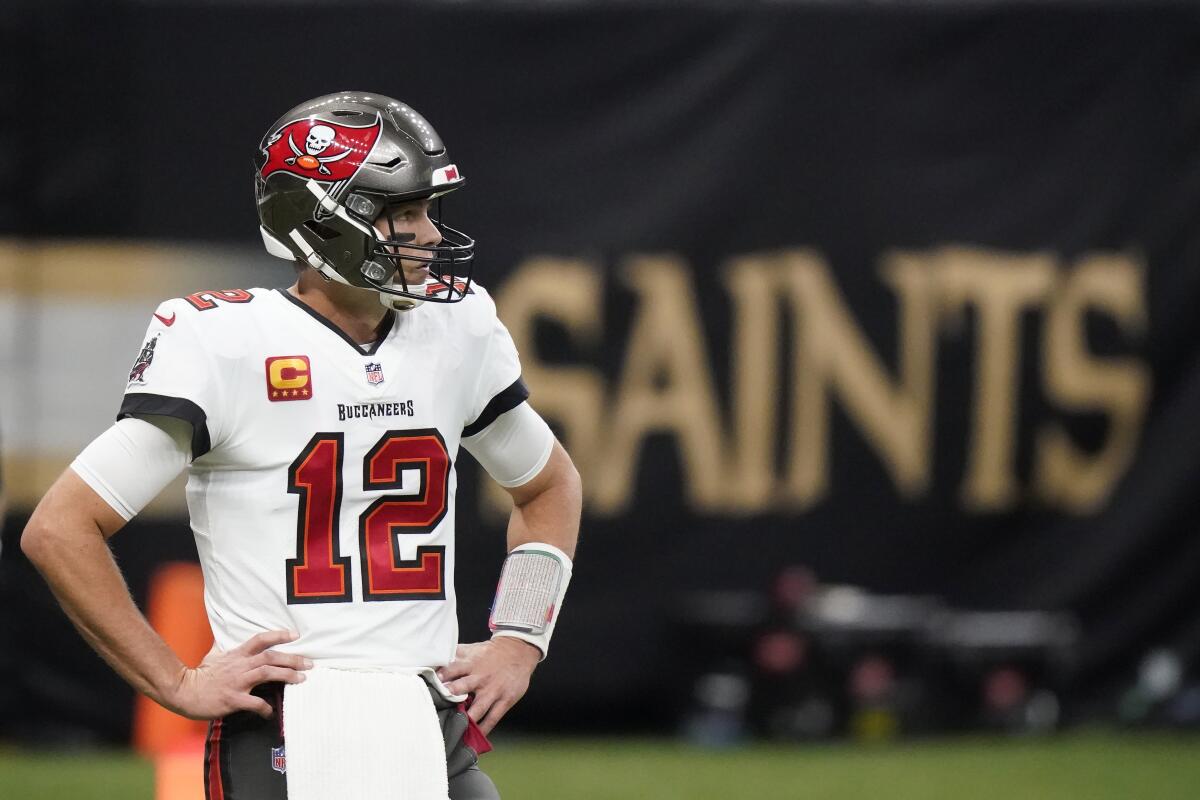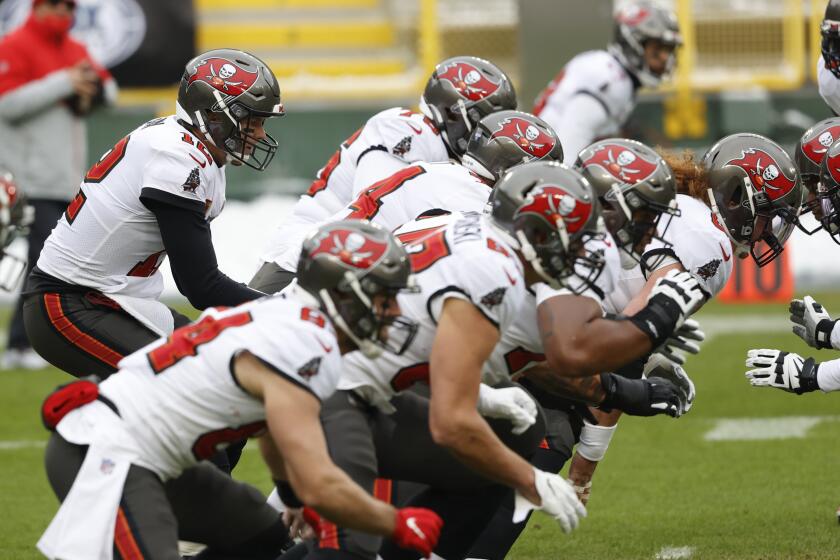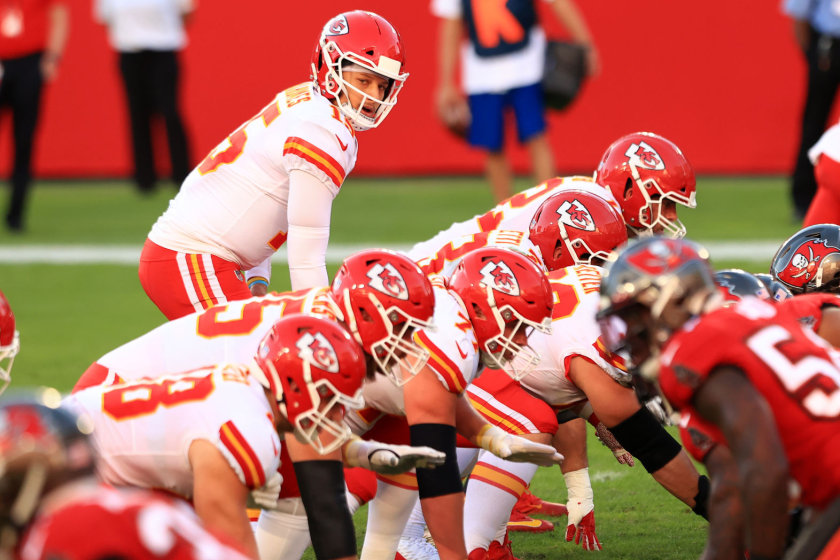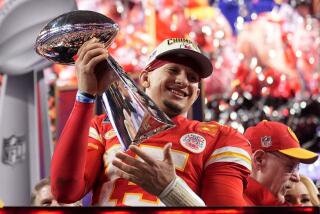Super Bowl LV: What if there’s a tie? Here are the overtime rules

- Share via
Super Bowl LI was looking like a blowout.
The Atlanta Falcons led the New England Patriots 28-3 midway through the third quarter before Tom Brady led the Patriots on an improbable comeback that resulted in something that had never happened before and hasn’t happened since.
A Super Bowl tied at the end of regulation.
We know how that one ended — Brady marched the Patriots down the field on the first possession of overtime and James White ran two yards into the end zone for the game-winning touchdown.
But what if this year’s Super Bowl between Brady’s Tampa Bay Buccaneers and Patrick Mahomes’ Kansas City Chiefs also has a tie score after four quarters? And what if someone doesn’t score a touchdown on the first overtime drive? Or what if no one scores at all during the initial overtime period?
Super Bowl week is usually abuzz with activity, but amid the coronavirus pandemic, the hype around Super Bowl LV has been as vanilla as it comes.
Here’s how overtime works at the Super Bowl.
What if the Super Bowl is tied at the end of regulation?
At this point, the rules are the same as during the regular season. Following a three-minute intermission, there’s a coin toss and then a 10-minute overtime period.
If the team that receives the kickoff scores a touchdown on its first possession (like the Patriots in Super Bowl LI), it wins the game.
If the kicking team registers a safety on that first possession, it wins the game.
The Tampa Bay Buccaneers’ offensive line corps learned over the course of the season why Tom Brady is arguably the greatest QB in NFL history.
If the team that receives the kickoff scores a field goal on its first drive, the kicking team then gets a possession. It can win the game with a touchdown, extend it with a field goal or lose it by not scoring.
If the game is still tied after all that, play continues and the team that scores first wins.
What if the Super Bowl is tied after the first overtime period?
During the regular season, the game would be called as a tie at that point. Since that can’t happen during the postseason, additional 10-minute overtime periods take place until someone scores.
An intermission of two minutes takes place between periods.
The beginning of the second and fourth overtime periods are treated the same as the beginning of the second and fourth quarters in regulation, with the teams switching goals.
In addition to conducting 954,830 coronavirus tests on more than 7,000 people a week, the NFL also used trackers to keep players and team staff safe.
The third overtime period begins with a kickoff.
If the score is still tied after four overtime periods, another coin toss takes place and the game continues.
Other Super Bowl overtime rules
Each team gets three timeouts per half.
There are no coaches’ challenges; all replay reviews are initiated by the replay official.
Players disqualified during regulation are not allowed to re-enter the game during overtime.
More to Read
Go beyond the scoreboard
Get the latest on L.A.'s teams in the daily Sports Report newsletter.
You may occasionally receive promotional content from the Los Angeles Times.














